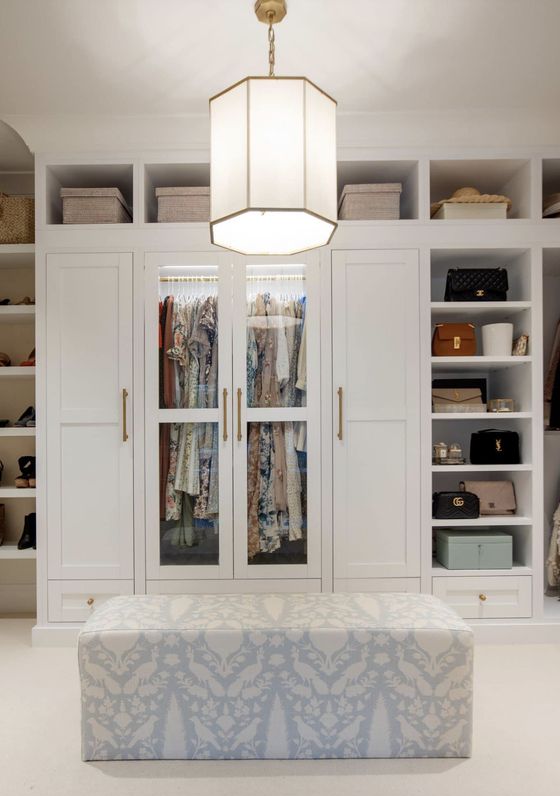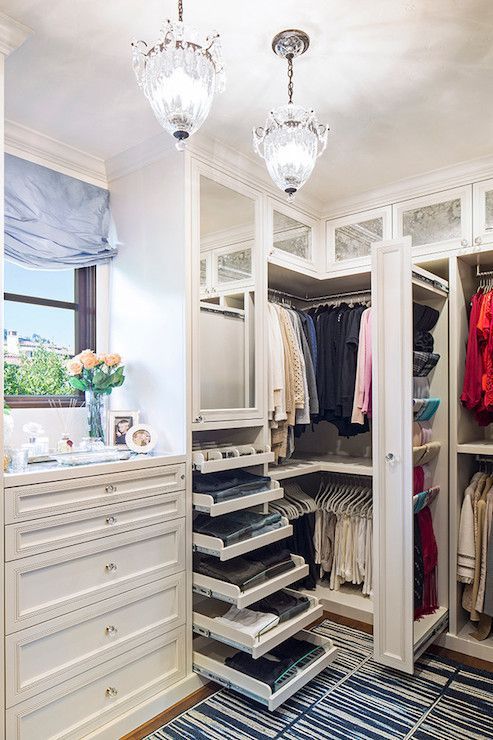The Hidden Potential of Built-in Cabinets
- modersyinterior

In our fast-paced world, having a well-organized living area is crucial for preserving peace and structure. The storage area, a vital but often underestimated part of our homes, plays a pivotal role in our ability to stay organized.
The trend towards built-in cabinets is gaining momentum, and rightfully so. These integrated storage solutions provide a sleek, efficient, and adaptable method for arranging our possessions, optimizing every inch of space in our dwellings.
Advantages of Built-in Cabinets

Built-in cabinets have many advantages, positioning them as an excellent addition to any residence. Primarily, they are remarkably space-efficient. By extending from the floor to the ceiling and utilizing the entire wall depth, built-in cabinets offer abundant storage without encroaching on precious floor area. This feature is particularly beneficial in homes with limited square footage or rooms with premium floor space.
The ability to tailor these cabinets is another significant perk. They can be designed and constructed to fit any space seamlessly, regardless of its dimensions or unique architectural elements like uneven ceilings or quirky nooks. This customization ensures no unused area is left, allowing for a storage solution perfectly aligned with your needs and aesthetic preferences.
Moreover, built-in cabinets stand as a wise investment for the future. They enhance your property’s value by offering a dependable and versatile storage system that can evolve with your lifestyle. With adequate care and upkeep, high-quality built-in cabinets can serve you for many years, presenting a prudent option for homeowners aiming to upgrade their storage facilities.
Evaluating Your Storage Requirements

Evaluating your storage demands is crucial before embarking on the journey of designing and customizing your built-in cabinets. This evaluation will guide you in identifying the necessary features and components for your cabinet to ensure it meets your functional and efficiency needs.
Begin by inventorying your items, paying attention to the variety and quantity of possessions you plan to store and their dimensions. This will aid you in selecting the appropriate mix of rods for your cabinet’s hanging shelves, drawers, and other organizational elements. It’s important to acknowledge that your storage requirements might evolve, suggesting the importance of incorporating adaptability into your cabinet design.
Furthermore, reflect on your daily habits and how you interact with your cabinet space. Do you require quick access to office attire or shoes you wear often? Are there belongings you use less frequently, like seasonal outfits or formal attire? Understanding your daily cabinet usage will enable you to create a design that aligns seamlessly with your day-to-day life.
Designing Your Built-in Cabinet

You can begin designing your perfect built-in cabinet with a clear understanding of your storage necessities. The design phase encompasses crucial steps, such as deciding on the ideal layout, picking materials and finishes, and selecting the appropriate storage elements.
Begin by drafting a preliminary layout of your cabinet. Account for the size of your space and the positions of any windows, doors, and unique architectural elements. This initial sketch will aid in visualizing the arrangement of your cabinet’s components and maximizing your space’s use.
Moving on, delve into selecting materials and finishes for your cabinet. Options range from wood, lacquer, and melamine to laminate and PVC. Your decision should reflect your aesthetic taste and budget, considering that certain materials offer outstanding durability and ease of maintenance.
The final step involves choosing storage solutions for your cabinet, such as rods for hanging clothes, shelves, drawers, shoe organizers, and other specialized options. In making these choices, consider the inventory of items and how you engage in a daily routine.
Organizing Your Built-in Cabinet

Achieving an orderly built-in cabinet is essential for enhancing your storage capacity. Implement the following strategies to ensure your cabinet remains tidy and efficient:
- Categorize your attire: Sort your clothing into groups, such as trousers, tops, and gowns. I suggest organizing further by color or season for easy access within these groups.
- Opt for slim, grip-enhanced hangers: These hangers occupy minimal space and prevent garments from slipping off, helping to maintain both organization and the condition of your cabinet.
- Adapt your cabinet with the seasons: Relocate off-season apparel to less accessible areas of your cabinet or store them in containers beneath your bed, freeing up space for clothing you wear.
- Implement shelf organizers and compartmentalized drawers: These organizational tools are excellent for maintaining tidy shelves and preventing the disarray of piled items.
- Embrace vertical storage options: Make use of hooks, additional hangers, or organizers that hang over the door to take advantage of spaces that are frequently overlooked, such as the interior of doors or the walls of your cabinet.
Enhancing Your Built-in Cabinet

Elevate the functionality and aesthetics of your built-in cabinets by integrating these innovative accessories and improvements:
- Mirrors: Installing mirrors on the interior of cabinet doors or walls enhances the perception of space and light and offers a practical spot for outfit checks.
- Slide-Out Clothes Racks: These convenient racks pull out from the cabinet, providing an accessible spot to hang garments as you get dressed or manage laundry.
- Pull-Out Tie and Belt Racks: Maintain an orderly arrangement of your ties and belts with these sleek, space-saving racks.
- Shoe Storage Solutions: Choose from shelves, drawers, or hanging options to keep your footwear collection organized and easily accessible.
- Drawer Organizers: Tailor-made inserts can transform cabinet drawers into neatly organized spaces, simplifying locating your belongings.
Choosing between Professional Assistance and DIY for Built-in Cabinet Projects

When creating the built-in cabinet, you’re faced with two primary paths: enlisting the help of a professional or diving into a DIY endeavor. Each route offers advantages and challenges, allowing you to decide based on your specific requirements, budget, and proficiency.
Opting for a professional cabinet designer or contractor brings the benefit of specialized expertise, promising a project executed to impeccable standards. These experts draw on a wealth of experience capable of crafting a bespoke cabinet that flawlessly caters to your organizational needs.
The trade-off, however, is typically a higher cost than DIY ventures, along with potential limitations on personalizing the design and having direct control over every aspect of the process.
Conversely, taking on a built-in cabinet project might appeal more to those seeking a cost-effective solution and desiring complete creative control. This approach allows for extensive customization and personal input throughout the design process.
Yet, acknowledging that a successful DIY project demands a specific skill set and confidence in handling various tasks, from carpentry to electrical work, is essential. Professional guidance might be safer if these tasks are daunting or beyond your current capabilities.
Maintaining Your Built-in Cabinets

Ensuring your built-in cabinets remain in peak condition requires consistent care and attention. Follow these simple yet effective strategies to maintain your cabinets’ appearance and functionality:
- Regular Cleaning: Periodically empty your cabinets to dust off shelves, hanging rods, and other surfaces. Use a vacuum to clean the floor and any mats inside the cabinet to eliminate dust and small particles.
- Damage Inspection: Look for any signs of damage, such as shelves starting to sag or hardware becoming loose. Early detection and repair can prevent more severe issues down the line.
- Immediate Spill Response: Quickly address any spills or stains inside your cabinets to prevent lasting damage.
- Avoid Overloading: Be mindful not to overload shelves or rods, as this can lead to damage and make items hard to retrieve.
- Choose Suitable Cleaning Agents: Select cleaning products appropriate for your cabinet’s materials and finishes. Steer clear of harsh chemicals that could harm the surfaces.
Built-in cabinets present a sophisticated and practical solution for storing and organizing your space. You can fully utilize every square inch of your home by carefully assessing your storage needs, crafting the perfect design, and applying intelligent organizational tactics.
Whether you opt for professional installation or embark on a DIY project, a thoughtfully designed built-in cabinet can elevate your living space and streamline your routines. Don’t hesitate to explore the possibilities built-in cabinets offer for transforming and enhancing your storage solutions today.
